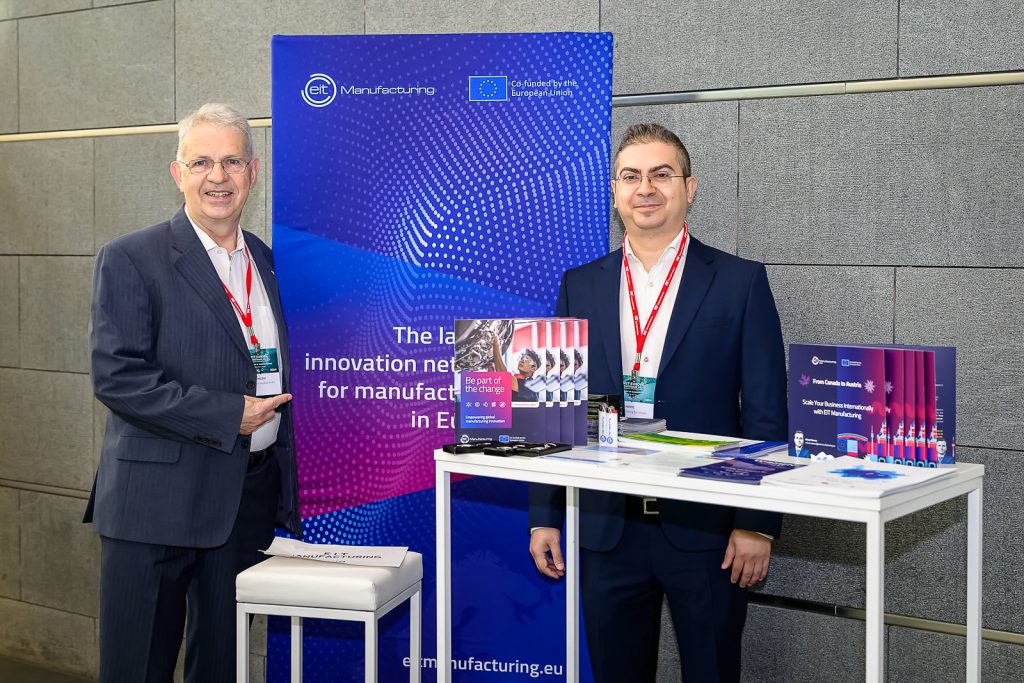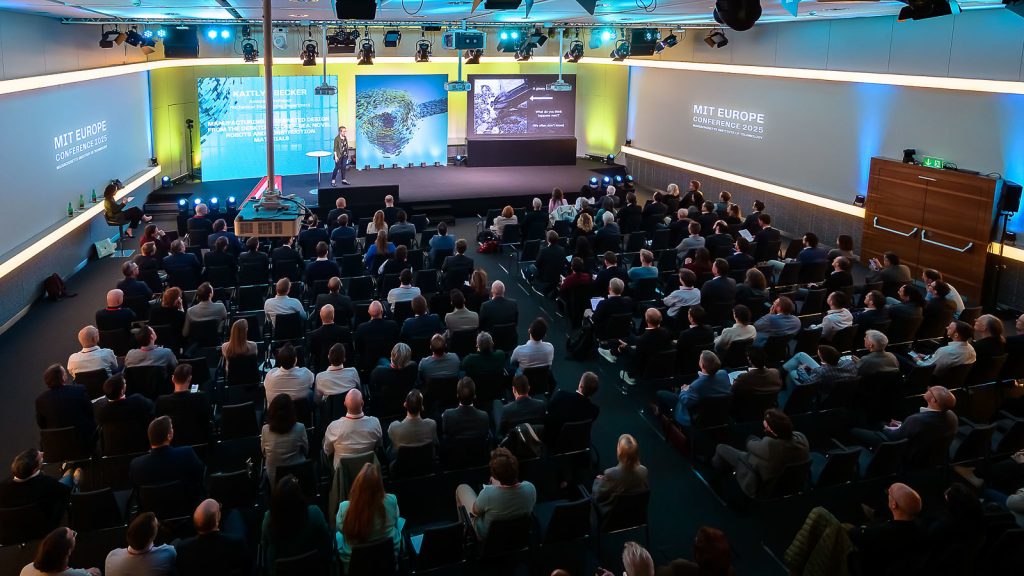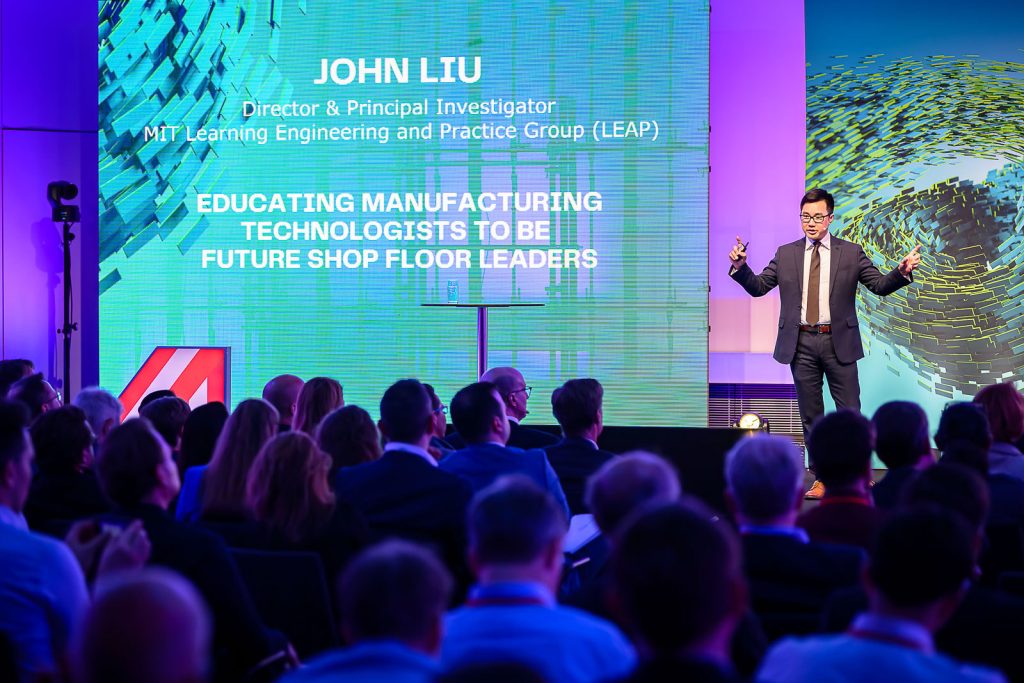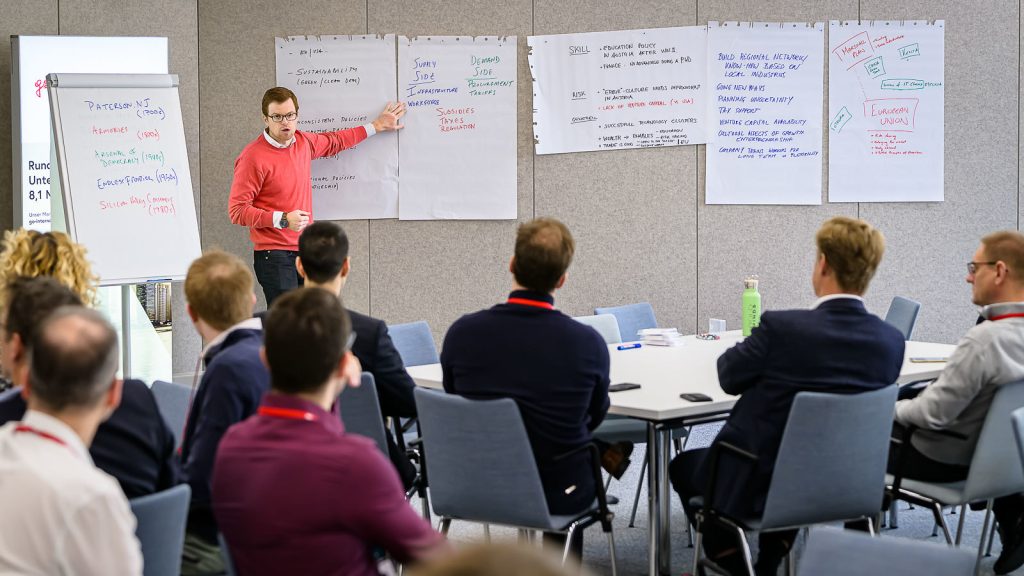MIT Europe Conference 2025: A Glimpse into the Future of Manufacturing
The MIT Europe Conference 2025 brought together the best of global academic research and European industrial innovation under one roof in Vienna. Held on 26-27 March at the Austrian Federal Economic Chamber (WKÖ), this milestone event marked the tenth edition of the conference, and for the first time, EIT Manufacturing was a proud partner and supporter of the conference.

Wolfgang Kniejski and Daniel Paunovic representing EIT Manufacturing at the conference; (c) WKO/Marko Kovic
With over 400 participants on site and more than 1,000 live-stream viewers from around the world, the conference served as a vital platform for discussing the Future of Manufacturing. It featured thought leaders from the Massachusetts Institute of Technology (MIT) and Europe’s top research institutions, alongside representatives from startups, corporates, and public institutions.
Innovation as a success factor

(c) WKO/Marko Kovic
Among the highlights of the MIT Europe Conference 2025 was Suzanne Berger‘s presentation, which focused on her research on the political dynamics of globalisation and the role of manufacturing before World War I. As a co-leader of the Manufacturing@MIT initiative and director of the “Production in the Innovation Economy” project, she presented new perspectives on manufacturing and innovation.
Christopher Love, Professor of Chemical Engineering at MIT, presented the transformative power of biomanufacturing. In his deep-dive workshop, “Transforming Biomanufacturing to Empower the Bioeconomy,” he illuminated how biotechnology can revolutionise not only nutrition but also energy consumption and disease cures—while simultaneously reducing greenhouse gas emissions.
Another highlight of the MIT Europe Conference was the presentation by Ben Armstrong, Director of the Industrial Performance Center at MIT. In his deep-dive workshop “Scaling New Technologies that Improve Work,” he demonstrated how artificial intelligence (AI) can help make workplaces more pleasant and productive rather than endangering them. Armstrong’s approach to AI is “positive-sum automation,” which benefits companies and employees alike.

Bruce Lawler giving his keynote speech; (c) WKO/Marko Kovic
Bruce Lawler, Managing Director of MIT Machine Intelligence for Manufacturing and Operations (MIMO), presented successful applications of AI and analytics in manufacturing. In his deep-dive workshop on the second day of the conference, participants learned how companies can drive digital transformation and optimise their production processes with the help of AI.
Kaitlyn Becker, Assistant Professor in Mechanical Engineering at MIT, captivated the audience with her vision of a seamless connection between design and manufacturing. She demonstrated how this integrative approach not only revolutionises the reliability of soft robots but also enables their use in previously inaccessible locations such as the deep sea. “To design a product is to design the process by which it is made,” said Kaitlyn Becker. With this, she emphasised that material selection, manufacturing process, and functionality must always be considered together to create true innovation. Her insights into current projects from her Fabrication-Integrated Design Lab were particularly impressive – from recycled glass as a 3D-printed building material to robotic assistance systems that intelligently combine technology and sustainability.
Hiram Samel, Senior Lecturer at the MIT Sloan School of Management, offered a glimpse into the future of the industry, highlighting how profound technological disruptions—from automation to AI—and the global focus on CO₂ reduction are changing the manufacturing landscape. His key message: Only through early investor engagement and innovative business models can the industry’s significant restructuring efforts be mastered.

John Liu on new learning methods; (c) WKO/Marko Kovic
Following this call for adaptation, John Liu addressed a critical question: “What will the training of tomorrow’s manufacturing leaders look like—and how do we shape it today?” With his MIT Learning Engineering and Practice Group (LEAP Group), he relies on innovative learning methods such as mixed reality, simulations, and blended learning to prepare engineers for the challenges of the future in a practical way. His goal: training that combines technological expertise with real-world applications and enables the leaders of tomorrow to shape the manufacturing of the day after tomorrow.
From Europe, leading voices such as Sara Scheffer (Vienna University of Technology), Thomas Bauernhansl (Fraunhofer Institute for Manufacturing Engineering and Automation), and Martin Hetzer (Institute of Science and Technology Austria, ISTA) shared compelling insights into their latest research.
Popular innovation workshops

Ben Armstrong giving a workshop on the second day; (c) WKO/Marko Kovic
Eight deep-dive workshops on the second day of the conference formed the interactive highlight of the MIT Europe Conference 2025. Here, participants were able to engage in dialogue with MIT’s leading researchers.
Photo material can be found at: MIT Europe Conference 2025 | Flickr

